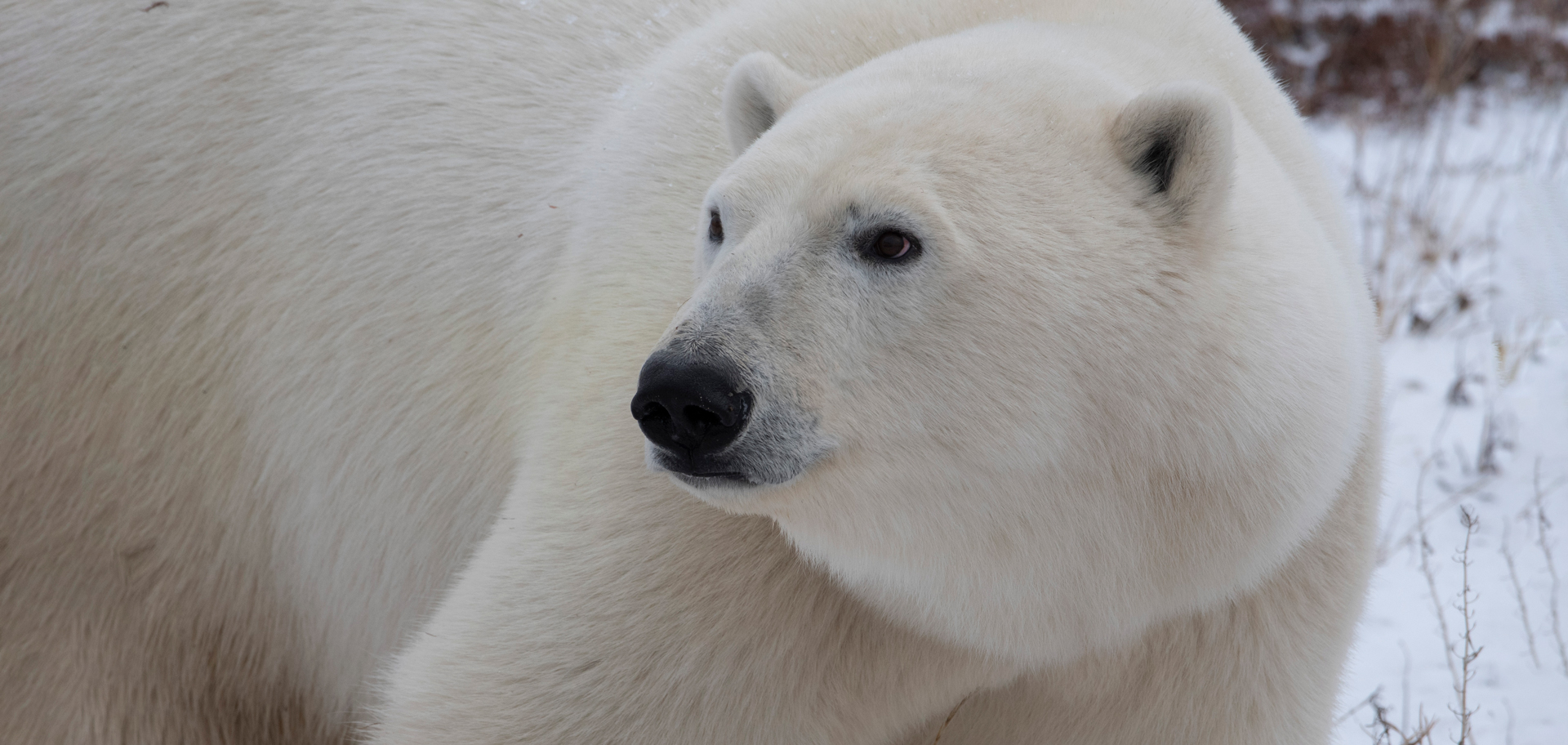
Worried about falling on the ice or sliding off the road in winter? Using biomimicry, polar bear paws just might hold the solution for better traction. ©Mike Hillman
In the winter, those of you who live in Northern regions understand the importance of traction—especially on ice and snow. In fact, humans have almost always been interested in discovering how to safely move across frozen or wet surfaces, whether that involves refining footwear for walking on all types of grounds or pavements, or improving tires for maneuvering roadways.
That’s where nature intersects with engineering; otherwise known as biomimicry.
For example, what makes it possible for some Arctic animals to walk or run across ice so effortlessly and gracefully without slipping and falling? To find out, researchers have recently taken a deep dive into the paws of polar bears.
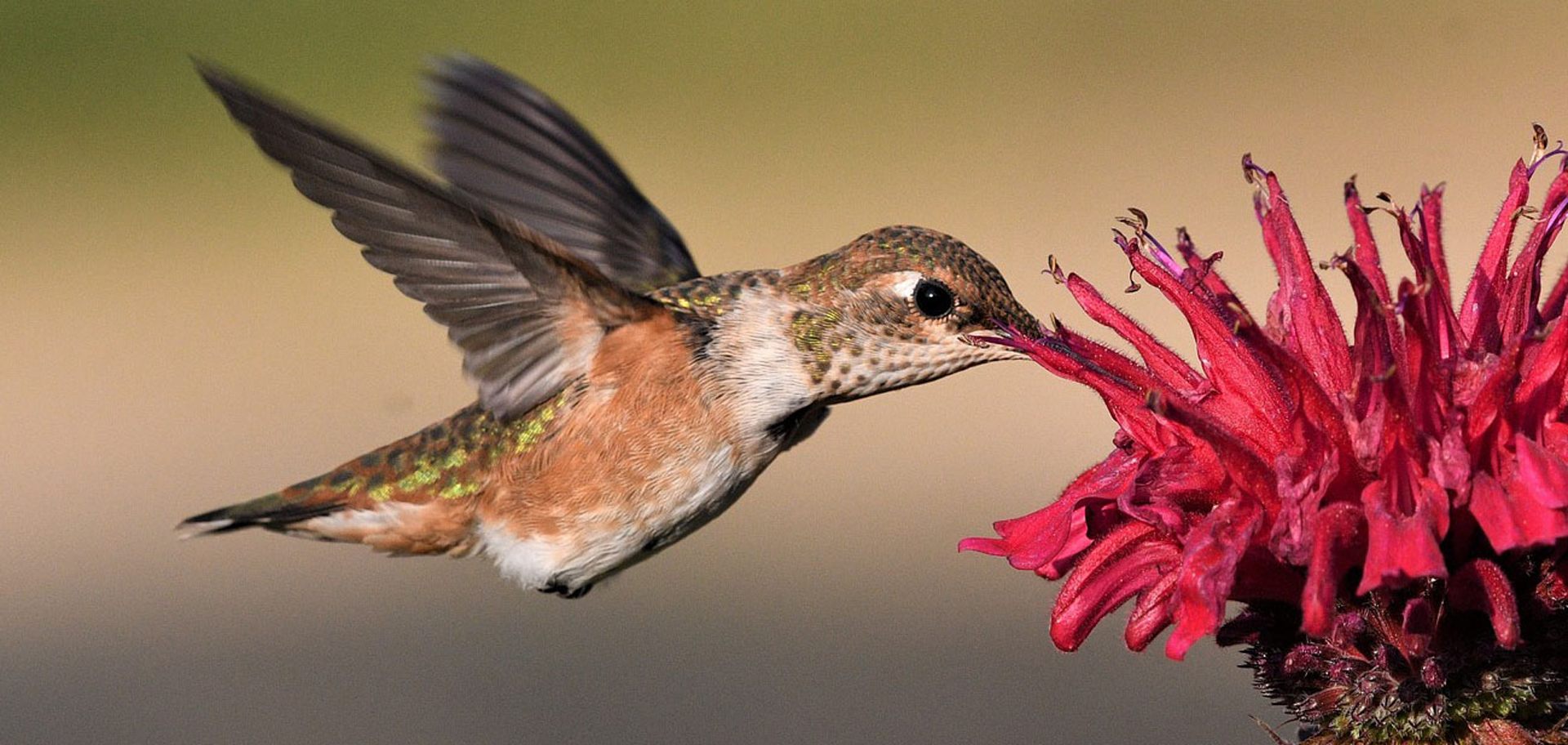
Hummingbirds are unique in flight; they can fly forward, backward and, even briefly, upside down.
And, in the field of flight, human inventors are looking for inspiration at the other end of the spectrum from large animals to small: at tiny hummingbirds. Using a novel modeling method, a team of researchers is gaining new insights into how hummingbirds produce wing movement, which could lead to design improvements in flying robots.
Hummingbird flight to improve aerial vehicles
Hummingbirds occupy a unique place in nature: they fly like insects but have the musculoskeletal system of birds. These diminutive nectar-seekers have extreme aerial agility and flight forms, which is why many drones and other aerial vehicles are designed to mimic hummingbird movements.
Traditionally, studies on bird or insect movements have measured such activities when the bird or insect is in natural flight or in an artificial environment where flight-like conditions are simulated. But most insects and, among birds specifically, hummingbirds are very small. That means that the data that can be retrieved from such measurements is limited.
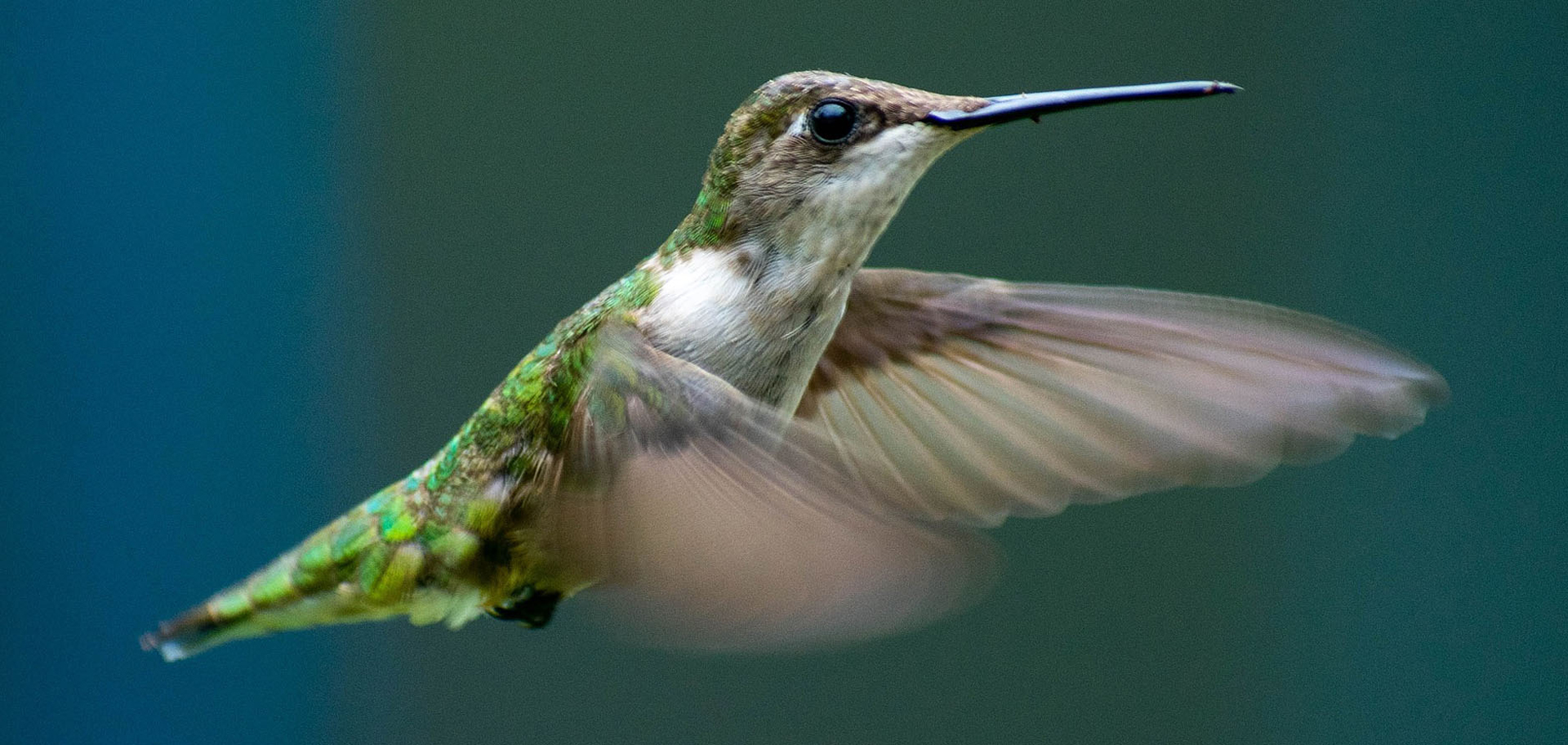
A hummingbird’s flexible wings beat in a figure-eight pattern up to 80 or 90 times a second in some of the smallest species. This special pattern lets them hover as well as any helicopter.
So, to better understand how a hummingbird’s muscles and skeleton work together in a wing to flap it, scientists from Penn State University in Pennsylvania recently reverse-engineered the inner workings of a hummingbird’s wing.
In a paper published in the science journal Proceedings of the Royal Society B in December 2022, researchers explained how they used muscle anatomy literature, computational fluid dynamics simulation data and wing-skeletal movement information captured using micro-CT and X-ray methods to inform their model. They also used an optimization algorithm based on evolutionary strategies, known as the “genetic algorithm,” to calibrate the model’s parameters. They were then able to reconstruct the motion of a hummingbird wing and simulate all the flows and forces generated by its flapping, including all the pressure acting on the wing. From that, they back-calculated the required total muscular torque needed to flap the wing, which was used to refigure the model.
The researchers report that their approach is the first to integrate these disparate parts for biological fliers; and with their model, they say, they were able to uncover previously unknown principles of hummingbird wing actuation.
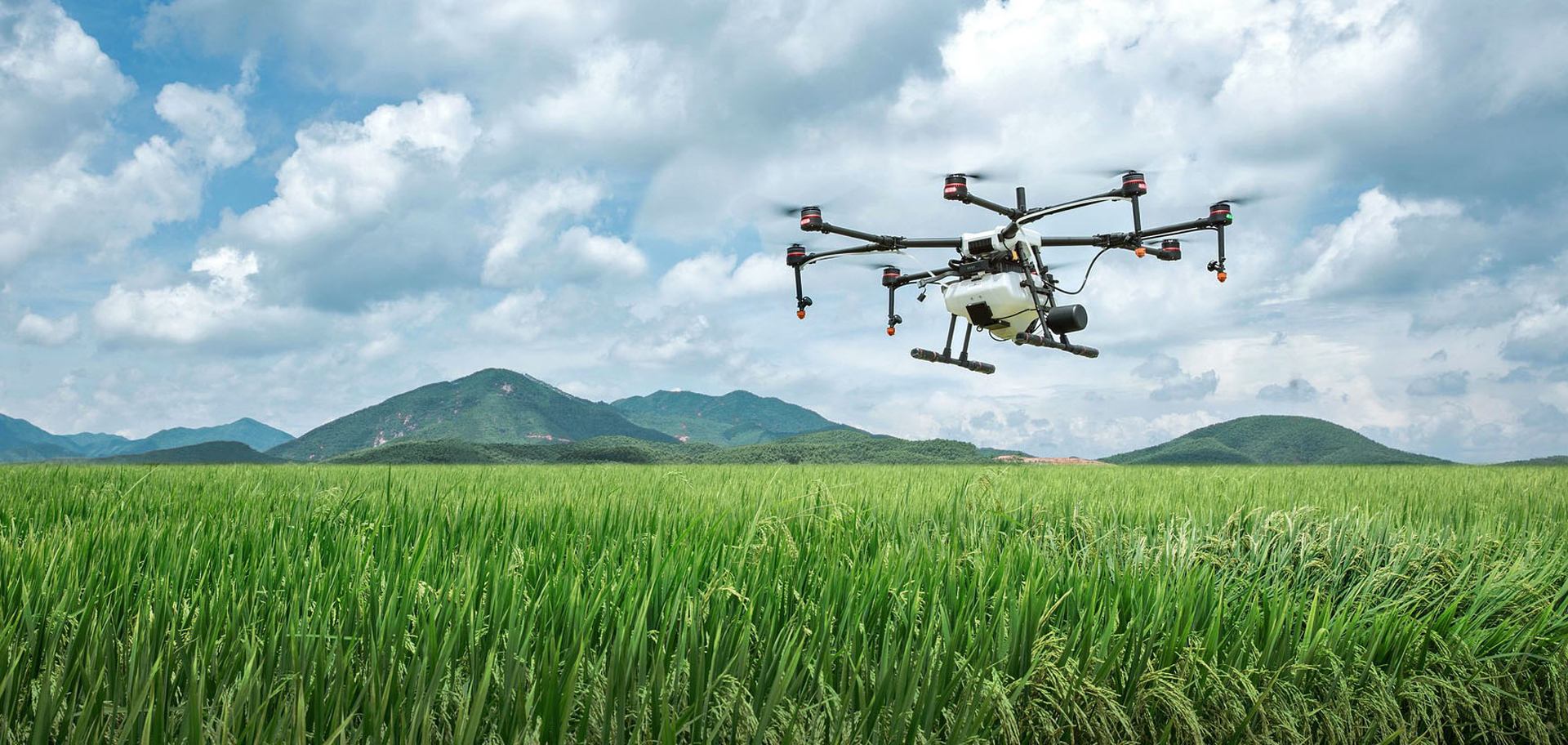
While the technology is not quite there yet, mimicking the flight of hummingbirds will provide the next generation of aerial vehicles with improved agility.
The first discovery was that hummingbirds’ primary muscles—that is, their “flight engines”—do not simply flap their wings in a simple back-and-forth motion but instead pull their wings in three directions: up and down, back and forth, and twisting (known as “pitching.”) The researchers also found that hummingbirds tighten their shoulder joints in both the up-and-down direction and the pitch direction using multiple smaller muscles.
The scientists liken the movement to when humans do fitness training, and a trainer says to tighten your core to be more agile. Hummingbirds are using a similar kind of mechanism. They tighten their wings in the up-and-down and pitch directions, but keep the wing loose along the back-and-forth direction, so that their wings appear to be flapping back and forth while their primary muscles are truly pulling the wings in all three directions. In this way, the wings have excellent agility in the up-and-down motion as well as in the twist motion.
The scientists believe that their work has implications for the development of aerial vehicles. Even though the technology is not there yet to fully mimic hummingbird flight, their findings, they say, provide the essential principles for mimicry of hummingbirds for the next generation of agile aerial systems.

According to Polar Bears International, from ears to fur, to claws and paws, polar bears are built for the cold and a life hunting seals on the ice. ©Lianne Thompson
Polar bear paws to enhance traction
Those who live in Akron, Ohio—where winter temperatures can get below zero and winter storms can deliver five inches a day—know that having car tires with a strong grip on the road can be a matter of life and death. And who knows the most about traction in wintry conditions? The answer is easy: polar bears.
That’s why a scientific team from the University of Akron in Ohio—that included polymer scientists who integrate biology into their research and an animal biologist who incorporates materials science—looked at previous work that studied the microstructures (or papillae, the little bumps on the pads of the feet) of polar bear paws and asserted that the papillae were adaptations for improved traction on snow. The University of Akron team found that these previous studies did not include other species of bears, so they identified two species closely related to polar bears (brown bears and American black bears) and one distantly related (sun bears) to include in their study. They also reached out to museums, taxidermists and many others to collect and view actual samples and replicas of bear-paw pads.
The scientists then prepared the paw-pad samples from the bears and imaged them using a scanning electron microscope. They created 3D printouts of the structures to capture the variety of diameters and heights of the features. In a lab, they then tested the paw pads in snow to see how they reacted to the conditions.

Microstructures on polar bear paws offer extra friction that keeps the animals from slipping on snow, a new study reports. ©Brooke Mitchell
What the team discovered was that all bears (except sun bears) have papillae on their paw pads, but that the papillae on polar bears were taller—up to 1.5 times. The taller papillae of polar bears help to increase traction on snow relative to shorter ones. Even though polar bears have smaller paw pads compared to the other species (likely because of greater fur coverage for heat conservation), the taller papillae of polar bears compensate for their smaller paw pads, giving them a 30 to 50 percent increase in frictional shear stress. This research was published in the November 2022 issue of the Journal of the Royal Society Interface.
Interestingly, papillae are not unique to polar bears. Previously, without studying the paw pads of other bears, it was assumed that papillae themselves are adaptations for enhanced traction on snow. What’s fascinating is the discovery that other North American bears have them, as well, and that the physical characteristics of the papillae are what matters for traction on snow.
This isn’t the first time that animals have been looked at to provide inspiration on how to improve grip. Gecko adhesion, mussel attachment and spider silk have all been subjects for examination.
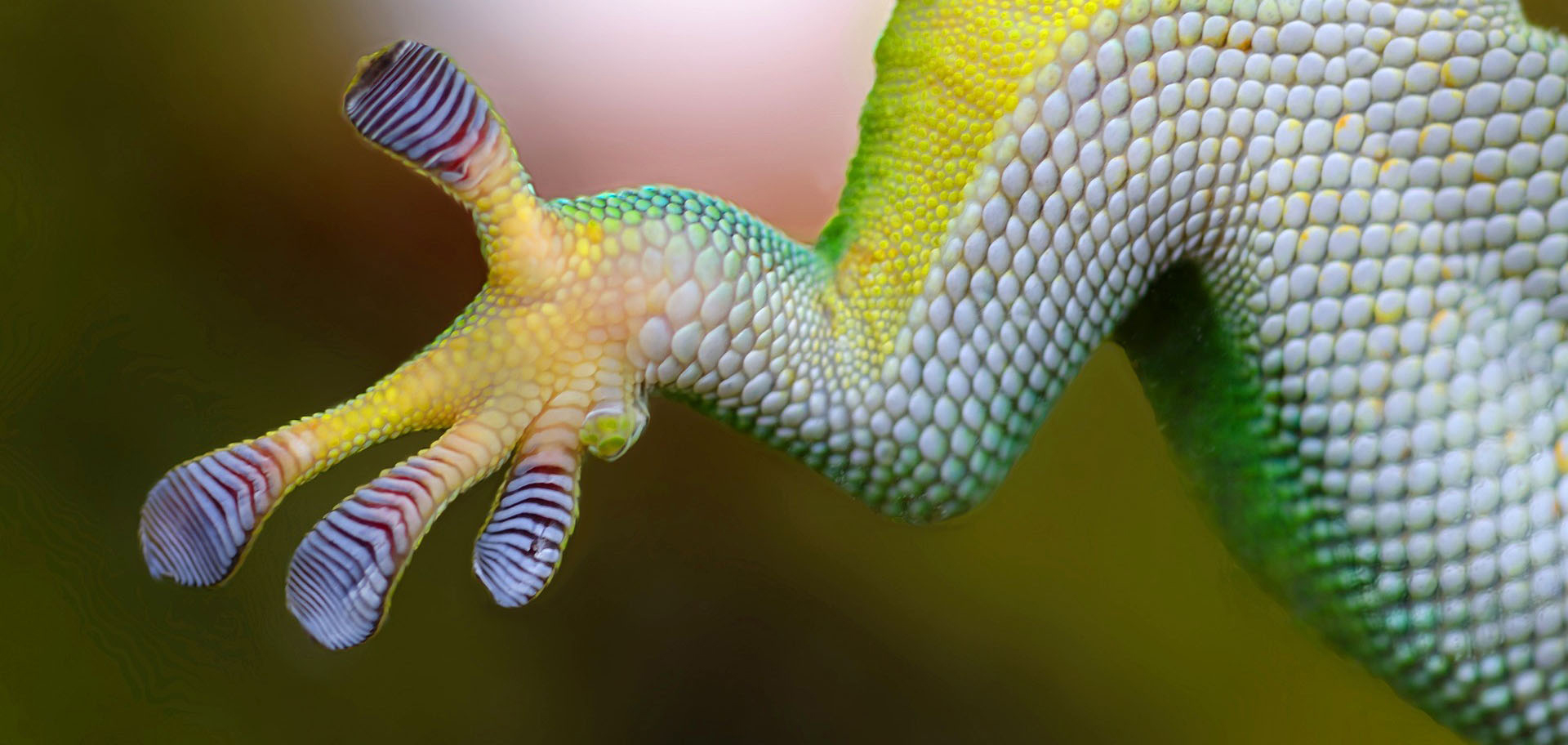
In 2021, engineers at Stanford University in California developed a robotic hand with a gecko-inspired grip.
Nature to solve stumpers
The polar bear paw study isn’t only of interest to tire manufacturers. Those who engage in high-altitude climbing could use this research, as could companies that specialize in the delivery of goods in bad weather.
In further studies, scientists hope to look at animals such as dogs, foxes, mountain goats and wolves to determine if nature has evolved different features in various animals in order to increase traction on ice and snow, and which surface-roughness profile has the best performance.
It seems that for so many of our challenges and problems, nature holds solutions. All we must do is protect and respect the wild that we have—and look.
Here’s to finding your true places and natural habitats,
Candy


























